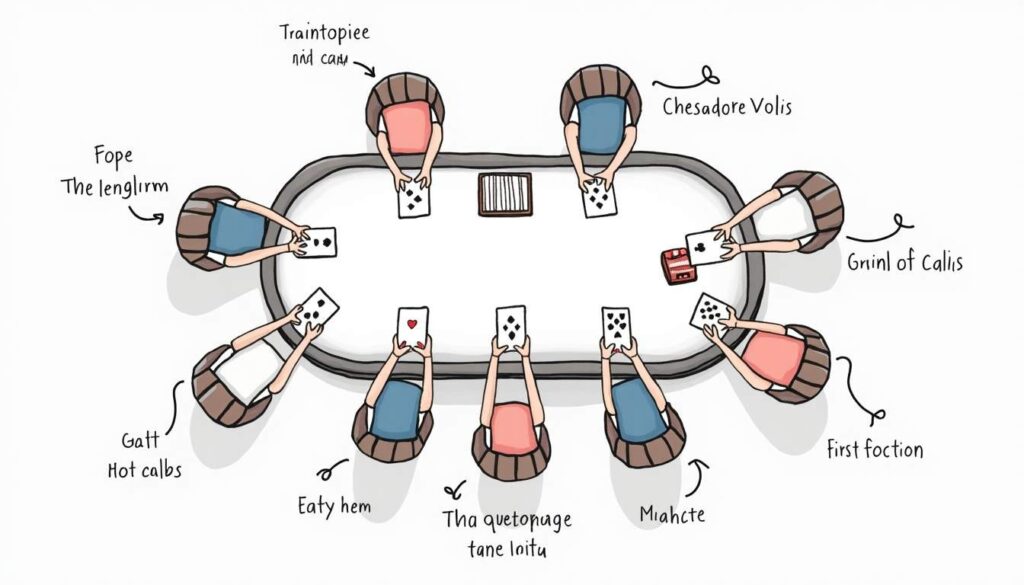Imagine sitting around a table with friends, the air thick with anticipation, cards shuffled and dealt, and the thrill of bluffing just beneath the surface. That’s the essence of Trucofax, a card game that has captured the hearts of players across continents. But what makes this game so addictive? What are the secrets behind its enduring popularity? Let’s dive deep into the world of Trucofax and uncover what makes it tick.
The Origins of Trucofax: A Game Steeped in Tradition
Trucofax didn’t just appear out of nowhere. Its roots trace back to a blend of traditional card games from South America and Mediterranean Europe, evolving over centuries into the form we know today. The game carries echoes of Spanish and Italian card games, but with a unique twist that sets it apart.
What’s fascinating is how Trucofax adapted to local cultures, picking up regional rules and slang along the way. In some areas, the game is played with a Spanish deck, while others prefer a standard 52-card deck. This flexibility has helped it spread far and wide, making it a staple in social gatherings from Buenos Aires to Barcelona. The game is often played in lively environments, where laughter and friendly banter fill the air, showcasing its role as a social lubricant that brings people together.
The Name “Trucofax” and Its Meaning
The term “Trucofax” combines two elements: “Truco,” meaning “trick” or “trickery” in Spanish, and “fax,” a nod to the fast-paced nature of the game. It’s a perfect name for a game that thrives on quick thinking, bluffing, and outsmarting opponents. The name itself hints at the core mechanics—deception and speed. Players often find themselves in a psychological dance, where reading body language and facial expressions becomes as crucial as the cards in hand.
This interplay of strategy and social interaction is what makes Trucofax particularly engaging. The game often serves as a rite of passage for many young players, who learn the nuances of bluffing and risk-taking from older generations. As players gather around a table, they not only share a game but also stories, laughter, and sometimes even rivalries that span years. The cultural significance of Trucofax extends beyond mere entertainment; it is a way to forge connections and celebrate community, reflecting the vibrant spirit of the regions it hails from.
How to Play Trucofax: The Basics You Need to Know
At its heart, Trucofax is a trick-taking game, but it’s far from your average card game. The goal is to win rounds by playing cards that beat your opponents’ cards, but the real challenge lies in the psychological warfare that unfolds.

Setup and Players
Typically, Trucofax is played with two to six players, divided into teams or as individuals, depending on the variant. Each player is dealt a hand of three cards. The game uses a special deck, often a Spanish deck of 40 cards, which excludes eights and nines, but some versions use a standard deck with specific cards removed. The choice of deck can influence the strategies employed, as different cards carry varying levels of power and significance. For instance, the highest-ranking card in the game, known as the “1 of swords,” can often dictate the flow of the game, making it a coveted card for players.
Gameplay and Rounds
The game progresses through a series of rounds, each consisting of three tricks. Players take turns playing one card per trick, aiming to win at least two of the three tricks to claim the round. However, the real excitement comes from the ability to “call truco,” a challenge that raises the stakes and forces opponents to decide whether to accept the challenge or fold. This moment is pivotal, as it can shift the momentum of the game dramatically. Players often rely on their intuition and knowledge of their opponents’ tendencies to make this crucial decision.
Calling “truco” is a bluffing move. It can intimidate opponents into folding or push them into risky plays. If the challenge is accepted, the points at stake double, adding tension and excitement. Players can escalate the challenge even further with calls like “retruco” and “vale cuatro,” raising the stakes higher and higher. The psychological aspect of these calls cannot be overstated; a well-timed truco can lead to a victory, while a poorly calculated one can result in a swift defeat. Players often engage in banter and bluffing, trying to read each other’s body language and facial expressions, which adds an extra layer of intrigue to the game.
Scoring System
Points are awarded based on the outcome of each round and the challenges accepted. The first team or player to reach a predetermined point total—usually 12 or 15—wins the game. The scoring system rewards not just winning tricks but also strategic bluffing and psychological play. Each round can feel like a mini-battle, with players carefully weighing their options and considering the potential risks and rewards of their actions. Additionally, the social aspect of Trucofax cannot be overlooked; it’s a game that thrives on interaction, laughter, and sometimes heated debates over the validity of a play. This communal experience is part of what makes Trucofax a beloved pastime in many cultures, fostering camaraderie and sometimes rivalry among friends and family alike.
The Art of Bluffing: Why Trucofax Is More Than Just Cards
Bluffing is the soul of Trucofax. Unlike many card games where luck and card strength dominate, Trucofax demands players to read their opponents, gauge their confidence, and decide when to push or fold.
Reading Opponents
Experienced players watch for subtle tells-hesitations, facial expressions, or even the way a card is played. These clues can reveal whether an opponent is genuinely strong or bluffing. Mastering this skill can turn the tide of the game.
Timing Your Calls
Knowing when to call “truco” or escalate the stakes is crucial. Calling too early or too often can backfire, making you predictable. Waiting for the perfect moment, when your opponents least expect it, can force them into mistakes or folds.
Psychological Warfare
Trucofax is as much a mental battle as it is a card game. Players often use misdirection, confident gestures, or even silence to unsettle opponents. This psychological layer adds depth and keeps the game fresh and unpredictable.
Variations of Trucofax Around the World
One of the reasons Trucofax remains popular is its adaptability. Different regions have their own versions, each with unique rules and nuances that reflect local culture and preferences.

Argentinian Trucofax
In Argentina, Trucofax is a national pastime. The game is typically played with a Spanish deck, and the scoring and calls are highly ritualized. The Argentinian version emphasizes quick rounds and intense bluffing, often accompanied by lively banter and music.
Brazilian Trucofax
Brazilian players use a 40-card deck similar to the Spanish one but have their own set of calls and scoring. The Brazilian variant is known for its fast pace and the use of regional slang during gameplay, making it a vibrant social event.
Other Regional Variants
In Uruguay, Paraguay, and parts of Spain, Trucofax is played with slight differences in card rankings and challenge rules. These variations keep the game interesting and allow players to experience different strategic elements depending on where they play.
Tips and Strategies to Master Trucofax
Winning at Trucofax requires more than just luck. Here are some practical tips to elevate your game:

Know Your Cards
Familiarize yourself with the ranking of cards in your version of Trucofax. Knowing which cards outrank others is fundamental to making smart plays and successful bluffs.
Practice Bluffing
Don’t be afraid to bluff, but do it sparingly. The best bluffs are believable and timed perfectly. Pay attention to how your opponents react to your calls and adjust your strategy accordingly.
Observe and Adapt
Watch your opponents closely. Notice patterns in their playstyle, tendencies to fold or call, and how they handle pressure. Adapt your approach to exploit their weaknesses.
Communicate with Your Partner
In team versions, subtle communication is key. Develop non-verbal cues and signals to coordinate your strategy without giving away your hand.
Why Trucofax Continues to Captivate Players
Trucofax’s enduring appeal lies in its perfect blend of skill, luck, and psychology. It’s a game that anyone can learn but takes years to master. The social aspect-gathering with friends, sharing laughs, and engaging in friendly rivalry-makes it more than just a card game.
Its flexibility allows it to fit into countless social settings, from casual family nights to competitive tournaments. The excitement of bluffing, the satisfaction of outsmarting an opponent, and the joy of shared moments keep players coming back.
The Cultural Impact of Trucofax
Beyond the game itself, Trucofax has become a cultural phenomenon in many countries. It’s featured in literature, music, and film, symbolizing camaraderie and wit. Learning Trucofax is often a rite of passage, connecting generations and communities.
Modern Adaptations and Online Play
With the rise of digital gaming, Trucofax has found new life online. Numerous apps and platforms allow players to enjoy the game virtually, connecting with others worldwide. These adaptations have introduced the game to new audiences, ensuring its legacy continues.
Final Thoughts: Embrace the Challenge of Trucofax
Trucofax is more than a card game-it’s a test of nerve, strategy, and social intelligence. Whether you’re a casual player or aiming to compete at a high level, the game offers endless opportunities to learn and grow.
Next time you sit down with a deck of cards and a group of friends, consider trying Trucofax. The thrill of the bluff, the rush of a well-played hand, and the laughter shared over a close call might just make it your new favorite game.

